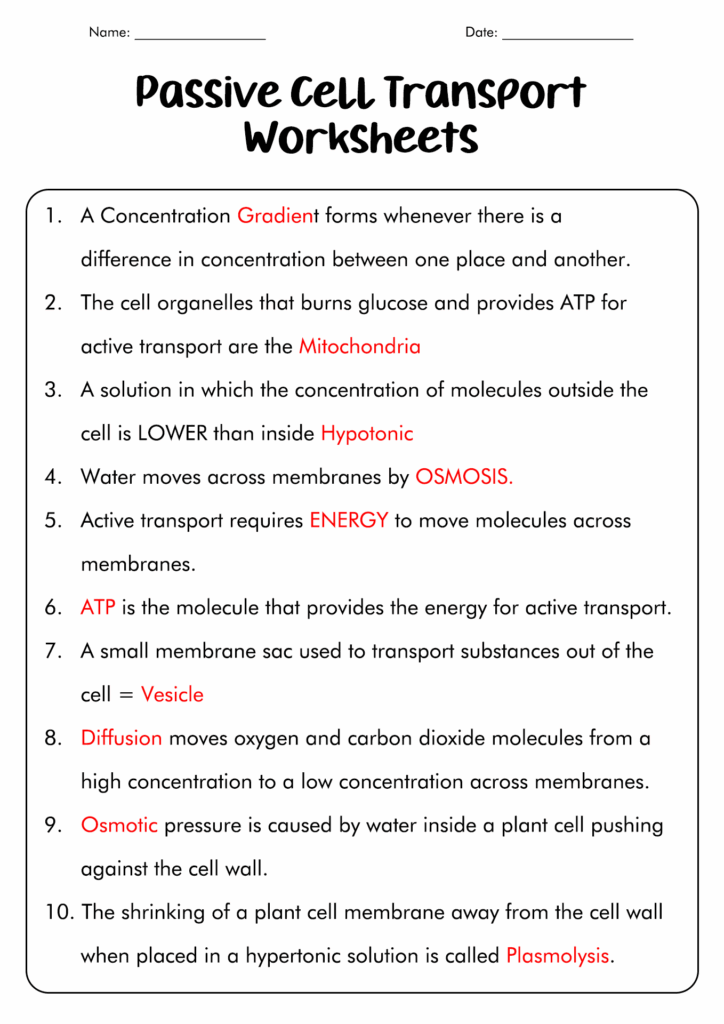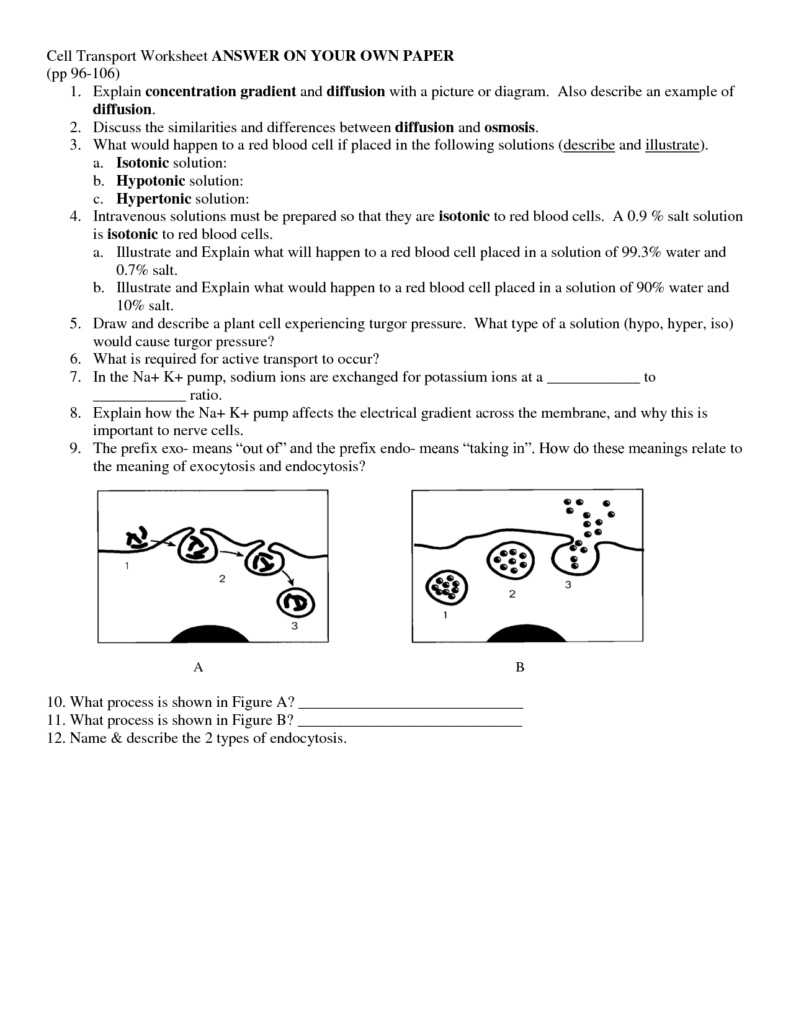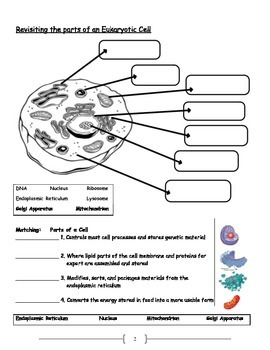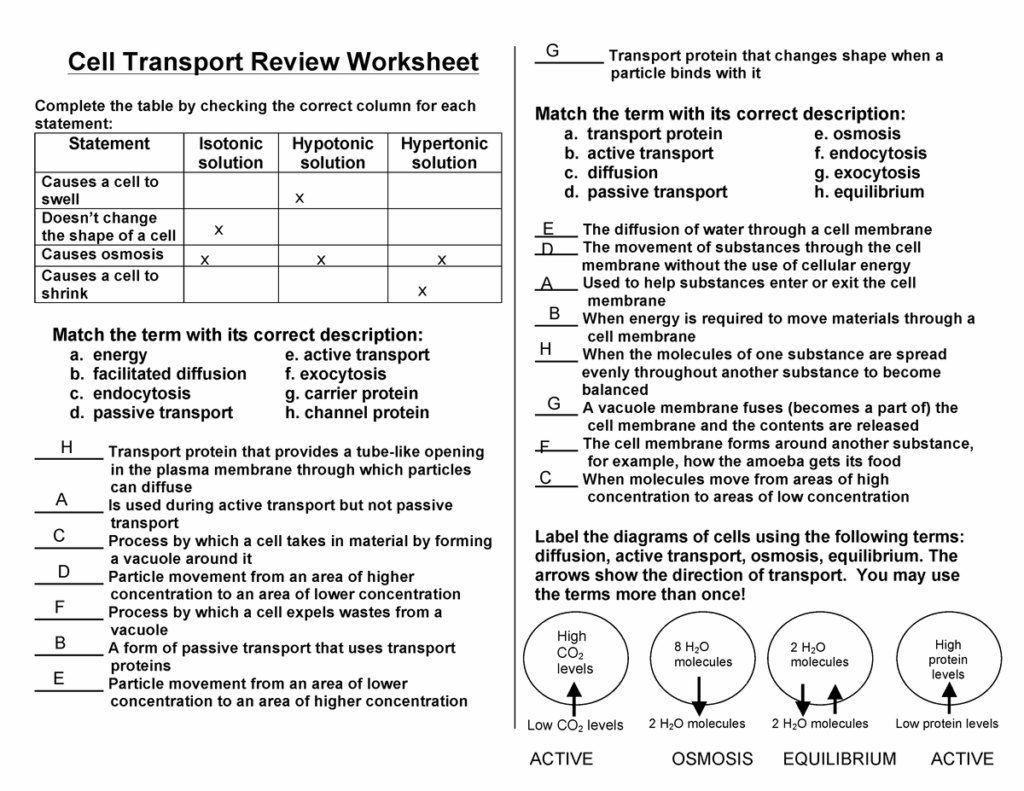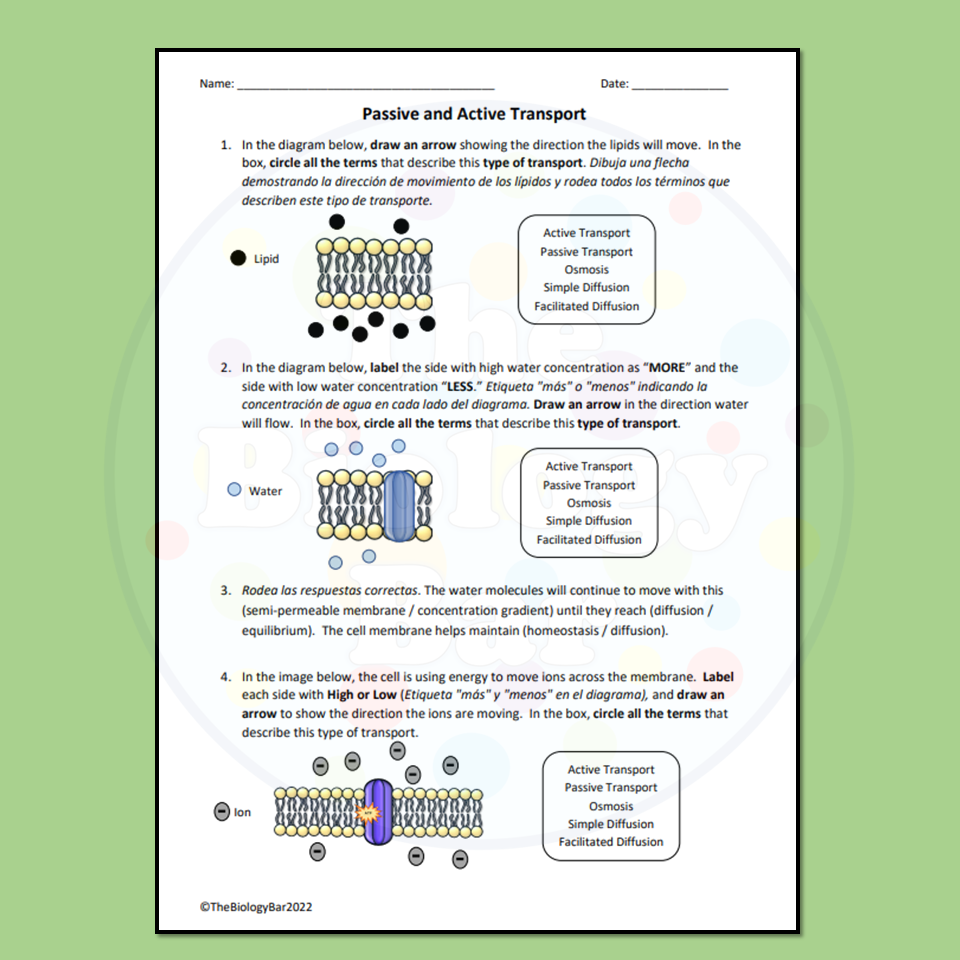Cell Passive Transport Worksheet Honors Biology Homework
**Title: Understanding Cell Passive Transport: A Honors Biology Homework Worksheet**
**Introduction:**
In the world of biology, understanding how cells transport materials across their membranes is crucial. One of the key mechanisms involved in this process is passive transport. In this honors biology homework worksheet, we will delve into the concept of cell passive transport, exploring its various forms and functions.
**Types of Passive Transport:**
Passive transport is a process in which substances move across a cell membrane without the input of energy. There are three main types of passive transport: diffusion, facilitated diffusion, and osmosis.
1. **Diffusion:** Diffusion is the movement of molecules from an area of high concentration to an area of low concentration. This process occurs until equilibrium is reached, meaning that the concentration of molecules is the same throughout the solution. In the context of a cell, diffusion allows for the movement of small, non-polar molecules such as oxygen and carbon dioxide across the cell membrane.
2. **Facilitated Diffusion:** Facilitated diffusion involves the movement of larger molecules or ions across the cell membrane with the help of transport proteins. These proteins act as channels or carriers, allowing specific molecules to pass through the membrane. Facilitated diffusion is essential for the transport of substances such as glucose and amino acids into the cell.
3. **Osmosis:** Osmosis is the movement of water molecules across a selectively permeable membrane. In this process, water moves from an area of low solute concentration to an area of high solute concentration, in order to equalize the concentration of solutes on both sides of the membrane. Osmosis plays a critical role in maintaining the balance of water and solutes within a cell.
**Functions of Cell Passive Transport:**
Cell passive transport serves several important functions in biological systems. It allows for the uptake of essential nutrients and ions, as well as the removal of waste products from the cell. Passive transport also helps to maintain the internal environment of the cell by regulating the concentration of molecules inside and outside the cell.
In conclusion, understanding the mechanisms of cell passive transport is fundamental to grasping the complexities of cellular biology. By completing this honors biology homework worksheet, students will gain a deeper insight into the processes that govern the movement of substances across cell membranes.
Download Cell Passive Transport Worksheet Honors Biology Homework
7 3 Cell Transport Worksheet Answers E streetlight
Cell Transport Active And Passive Transport Worksheet Osmosis Diffusion
Cell Transport Worksheet Answers Comprehensive Solutions For Biology
ESL Biology Cell Transport Worksheet Made By Teachers Worksheets
